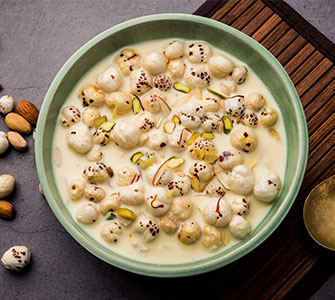Introduction: For individuals with diabetes, indulging in a sweet treat often feels like an impossible luxury. Desserts are usually seen as guilty pleasures that can cause blood sugar spikes and throw off glucose management. However, with the right choices, it is possible to enjoy a delicious dessert without worrying about the glycemic impact. By focusing on low glycemic index (GI) desserts, people with diabetes can have their cake (or pudding) and eat it too — without compromising their health.
The glycemic index measures how quickly a food raises blood sugar levels. High-GI foods cause rapid spikes in blood sugar, which can be problematic for people with diabetes. On the other hand, low-GI foods are digested more slowly, leading to a gradual rise in blood glucose levels. Choosing desserts with a low GI is an excellent strategy for managing blood sugar while still satisfying your sweet cravings.
But dessert is more than just a food — it’s a sensory experience, and many people have emotional ties to sweet foods. In this blog, we’ll explore the psychology behind dessert cravings, why low-GI options are perfect for diabetics, and a delicious low-GI dessert recipe that’s full of fiber, healthy fats, and a natural sweetener.
The Psychology of Eating Desserts: The Sweet Connection
Why do we crave desserts so intensely, especially when we know they aren’t the best for our health? The answer lies in both biology and psychology:
- Reward Mechanism: Eating sweet foods activates the brain’s reward system, stimulating the release of dopamine, the “feel-good” neurotransmitter. This chemical response makes us feel pleasure, which reinforces the desire to consume more sweets.
- Emotional Comfort: Desserts are often tied to emotional comfort. Whether it’s a piece of chocolate after a stressful day or cake at a family gathering, sweet treats have the power to provide emotional solace. This makes it hard for many to give up sweets altogether, even when managing a health condition like diabetes.
- Cultural Traditions: In many cultures, desserts are part of celebrations and rituals. They symbolize togetherness, celebration, and indulgence. Giving them up entirely can feel like missing out on significant life experiences.
Despite the psychological and cultural reasons to enjoy desserts, for diabetics, moderation is key. Rather than indulging in traditional sugary treats that spike blood sugar, low-GI desserts allow diabetics to enjoy sweet flavors while minimizing the impact on glucose levels.
Print
A Low Glycemic Index Dessert That Diabetics Can Enjoy Occasionally: Sweet Treats Without the Guilt
- Author: Mubarra
Description
A Low Glycemic Index Dessert: Date and Makhana Chia Pudding
One dessert that is perfect for diabetics and addresses the psychology of indulging without guilt is Date and Makhana Chia Pudding. Chia seeds, dates, and makhana (fox nuts) are all low-GI ingredients that provide fiber, protein, and healthy fats to help balance blood sugar levels. This recipe uses dates as a natural sweetener instead of refined sugar, and the addition of makhana adds a delightful crunch along with extra fiber and antioxidants.
Ingredients
Ingredients:
- 2 tablespoons chia seeds (high in fiber, omega-3 fatty acids, and protein)
- 1 cup unsweetened almond milk (low in carbs and high in calcium)
- 2 medjool dates (pitted, soaked in warm water for 10 minutes, and blended into a paste — natural sweetener)
- 1 tablespoon cocoa powder (unsweetened, rich in antioxidants)
- ½ teaspoon vanilla extract (optional, for flavor)
- 1 tablespoon makhana (fox nuts) (lightly roasted, for crunch and added fiber)
- Pinch of sea salt (to balance sweetness)
Instructions
Instructions:
- Prepare the Chia Pudding Base: In a medium bowl, combine the chia seeds, almond milk, cocoa powder, date paste, and vanilla extract. Stir well to ensure that all ingredients are evenly mixed.
- Add Makhana Crunch: Lightly roast the makhana in a dry pan over medium heat for 2-3 minutes, until they puff up slightly. Chop them into smaller pieces and fold them into the chia mixture for added texture.
- Chill and Set: Cover the bowl and refrigerate the mixture for at least 2-3 hours or overnight. The chia seeds will absorb the liquid and thicken into a creamy pudding-like consistency.
- Serve: After the pudding has set, stir it to break up any clumps. Serve in individual bowls, garnished with extra roasted makhana or a sprinkle of cinnamon if desired.
Notes
Nutritional Benefits:
- Low Glycemic Index: Chia seeds and makhana are all low-GI ingredients, whereas dates is medium GI making this pudding a diabetic-friendly treat that can be consumed OCCASIONALLY.
- High in Fiber: Chia seeds and makhana are both excellent sources of fiber, which slows the absorption of sugars and helps maintain stable blood glucose levels.
- Natural Sweetness: Dates provide a natural source of sweetness without the need for refined sugars. They also contain fiber and important minerals like potassium, which support heart health.
- Rich in Antioxidants: Cocoa powder and dates are high in antioxidants, which help fight oxidative stress and promote overall well-being.
- Healthy Fats: Chia seeds are loaded with omega-3 fatty acids, which contribute to heart health and reduce inflammation.
Research Backing:
- A study published in the Journal of Nutritional Biochemistry (2011) highlighted that chia seeds help improve glucose tolerance and reduce blood sugar levels, making them an excellent choice for those managing diabetes. Link to Study
- A research paper in the Journal of the American College of Nutrition (2009) found that dark chocolate (particularly varieties with 70% cocoa) has a low glycemic index and can improve insulin sensitivity, which is important for diabetics. Link to Study
- According to a study in Nutrients (2019), dates, particularly Medjool dates, have a low glycemic index and can help reduce postprandial blood sugar spikes when consumed in moderation. Link to Study
Why Low-Glycemic Desserts Matter for Diabetics
For people with diabetes, managing blood sugar is essential. Low-GI foods are digested more slowly and cause a gradual rise in blood glucose, making them ideal for people with diabetes. By choosing desserts with a low GI, you can enjoy your favorite sweet treats without the guilt or worry of significant blood sugar spikes.
Moreover, low-GI desserts often contain high amounts of fiber, healthy fats, and other essential nutrients that can help with glucose regulation and overall health. Foods like chia seeds, dates, and makhana can contribute to better heart health, stable energy levels, and improved digestion.
Conclusion: Indulge in Sweets Without the Guilt
While indulging in sweets may be a psychological and cultural necessity, diabetics don’t have to give up their favorite treats entirely. By opting for low-GI desserts like Date and Makhana Chia Pudding, you can enjoy the sweet flavors you crave while keeping blood sugar levels stable. Plus, the fiber and antioxidants in this dessert promote overall health, so you can satisfy your sweet tooth without compromising your well-being.
Remember, the key to healthy dessert consumption lies in moderation and making smart ingredient choices. By embracing low-GI options, you can indulge in occasional sweets and maintain a balanced, healthy lifestyle.



